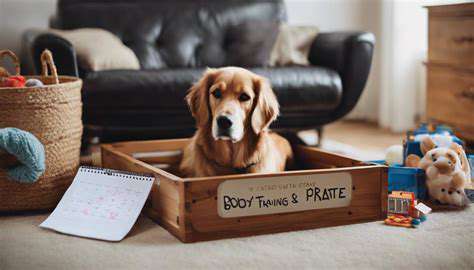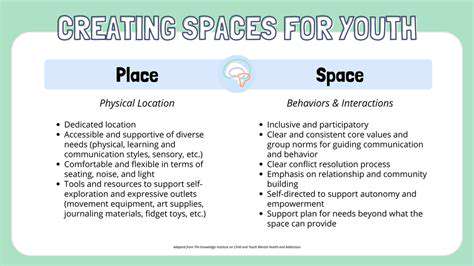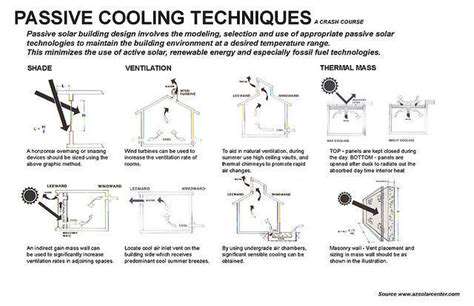Crate Training Your Dog: Benefits and How To

Crate Training Basics
Introducing your dog to a crate is a crucial part of responsible pet ownership, offering numerous benefits. A properly trained dog will view their crate as a safe and comfortable den, a positive association that can be invaluable for house training, preventing destructive behaviors, and providing a secure space for your dog during the day or when you're away from home. Understanding the process and establishing clear expectations will lay the foundation for a harmonious relationship between you and your furry friend.
Crate training isn't about punishment; it's about providing a controlled environment where your dog feels secure and in control. It's an essential part of the overall training process, and the benefits extend far beyond simply keeping your dog contained. A well-trained dog is a happy dog, and crate training is a key component of achieving that happiness.
Creating a Positive Association
The first step is to create a positive association with the crate. Don't rush this process; your dog should view the crate as a happy place. Make the crate inviting by filling it with comfortable bedding, toys, and familiar scents. This helps them feel secure and content inside.
Gradually introduce your dog to the crate, starting with short periods of time. Begin by leaving the door open, allowing them to enter and exit at will. Praise and reward them for any positive interactions with the crate. Avoid forcing your dog into the crate; positive reinforcement is key to establishing a positive association.
Building on Positive Reinforcement
Once your dog is comfortable with the crate, start introducing longer periods of time. Gradually increase the time they spend inside, rewarding them with treats and praise for remaining calm and quiet. This will help your dog associate the crate with positive experiences.
Consistency is vital in crate training. Establish a routine and stick to it as much as possible. This consistency will help your dog understand the expectations and will contribute to a smoother transition. Regularly reinforce the positive association with the crate by giving treats and praise when they enter willingly or remain calm inside. Be patient and persistent, and you'll see positive results.
Remember, patience and positive reinforcement are key elements in successfully introducing your dog to their crate. With time and dedication, your dog will come to view their crate as a safe and comfortable haven.
Mindfulness is a powerful tool for managing stress and promoting relaxation. It involves paying attention to the present moment without judgment. This practice can help to quiet the mental chatter that often contributes to stress, allowing you to become more aware of your thoughts and feelings without getting swept away by them. Through regular mindfulness exercises, you can cultivate a greater sense of calm and emotional regulation.
Essential Crate Training Techniques: Positive Reinforcement
Understanding the Crate as a Safe Space
Crate training isn't about punishment; it's about creating a safe and comfortable den for your dog. A properly introduced crate becomes a positive association, a place where your dog feels secure and can retreat when overwhelmed. This crucial aspect of training involves gradual introduction and consistent positive reinforcement. It's essential to avoid using the crate for punishment, as this can create anxiety and fear, counteracting the very goal of making it a safe haven.
Think of the crate as a den, a familiar and comforting space. Provide soft bedding, toys, and a familiar blanket or scent from their bed or favorite spot. This helps your dog feel more secure, reducing anxiety and making the crate a positive experience. Regular positive reinforcement, like treats and praise, is vital during this phase. Avoid using the crate for punishment, as this can be confusing and harmful.
Positive Reinforcement Techniques for Crate Training Success
Positive reinforcement is the cornerstone of effective crate training. This method focuses on rewarding desired behaviors, such as going into the crate willingly, rather than punishing unwanted ones. Always reward your dog immediately after they enter or stay in the crate. This creates a strong positive association and reinforces the desired behavior. Consistency is key; rewarding the same behavior every time will establish a clear understanding for your dog.
Use high-value treats to motivate your dog to enter the crate. Start with short periods, gradually increasing the duration as your dog becomes more comfortable. During these sessions, praise your dog lavishly and reward them with treats as soon as they enter the crate. Even if they only stay for a few seconds, acknowledge and reward the behavior. This builds a positive association with the crate environment.
If your dog shows hesitation or resistance, try enticing them with their favorite treats or toys to encourage them to enter. Gradually increase the time they spend inside the crate. Patience and persistence are paramount in this process. Avoid forcing your dog into the crate, as this can create negative associations and hinder progress. Focus on making the crate a positive and rewarding experience.
Employ a variety of rewards, like praise, petting, and even a favorite toy, to reinforce the desired behavior. This keeps the training sessions engaging and prevents your dog from becoming bored or losing interest. Remember, consistency and positive reinforcement are the cornerstones of success in crate training.
Gradually increase the duration of time your dog spends in the crate. This helps them adjust to longer periods without feeling anxious or frustrated. Short, frequent sessions are more effective than infrequent long sessions.
Using a timer can be helpful in gradually extending the time your dog spends inside. Start with short intervals and gradually increase the duration. This will allow your dog to understand and adapt to the crate time expectations.
Troubleshooting Common Crate Training Challenges
Understanding Crate Training Basics
Crate training, a cornerstone of positive dog training, involves using a crate as a safe and comfortable den for your dog. It's crucial to understand that the crate is not a punishment tool but rather a positive space for your dog to relax, sleep, and feel secure. This foundational understanding is key to avoiding common challenges and ensuring successful training. Positive reinforcement techniques, such as rewarding calm behavior inside the crate, are essential for a positive association.
Identifying the Root Cause of Resistance
If your dog is resisting crate training, it's vital to identify the underlying reason. Is it fear-based? Are there anxieties about confinement? Perhaps the crate is too small or uncomfortable. Or is your dog simply not used to the concept of a confined space? Understanding the source of resistance is the first step toward finding a solution. Careful observation and a willingness to adjust your approach are crucial.
Addressing Anxiety and Fear
Dogs exhibiting anxiety or fear often need extra patience and support during crate training. Gradually introduce the crate, starting with short periods of time and positive reinforcement when your dog displays calm behavior inside. Consider using calming aids such as pheromone diffusers or calming music to create a more soothing environment. Avoid forcing your dog into the crate; this can exacerbate anxiety. Ensure the crate is a positive association.
Addressing House Training Issues
Crate training is often intertwined with house training. If your dog is having accidents outside the crate, it's essential to address the house training aspects. Establish a consistent potty schedule, taking your dog outside frequently. A clean crate environment and prompt rewards for potty breaks outside are critical for successful house training.
Dealing with Crate-Related Separation Anxiety
Separation anxiety can manifest during crate training, particularly if your dog is used to being with you constantly. To manage this, start by gradually increasing the time you leave your dog in the crate. Make sure the crate is a comfortable and positive space. Employ distraction techniques when you leave your dog in the crate. Ensure the crate is not associated with negative experiences. Building positive associations and a routine are essential.
Proper Crate Size and Placement
The size of the crate is crucial. It should be large enough for your dog to stand up, turn around, and lie down comfortably. A crate that is too small can be stressful and lead to behavioral issues. Place the crate in a quiet, safe area of your home, away from high-traffic areas. Avoid placing the crate in a location where your dog might feel exposed or vulnerable. A well-placed crate is a key element of successful crate training.
Read more about Crate Training Your Dog: Benefits and How To
Hot Recommendations
- Best Pet Bowls: Stainless Steel and Ceramic
- Pet Hydration: Why It's Crucial
- Stop Counter Surfing: Training Your Dog to Stay Off
- Pet Hypothyroidism: Symptoms and Management
- Signs of Pet Liver Disease: What to Watch For
- Pet Emergency Kits: What to Pack
- Dangers of Xylitol: Toxic to Dogs
- Dealing with Pet Diarrhea: When to See a Vet
- Preparing Pets for Travel: Tips for a Smooth Trip
- Pet Depression: Recognizing the Signs











